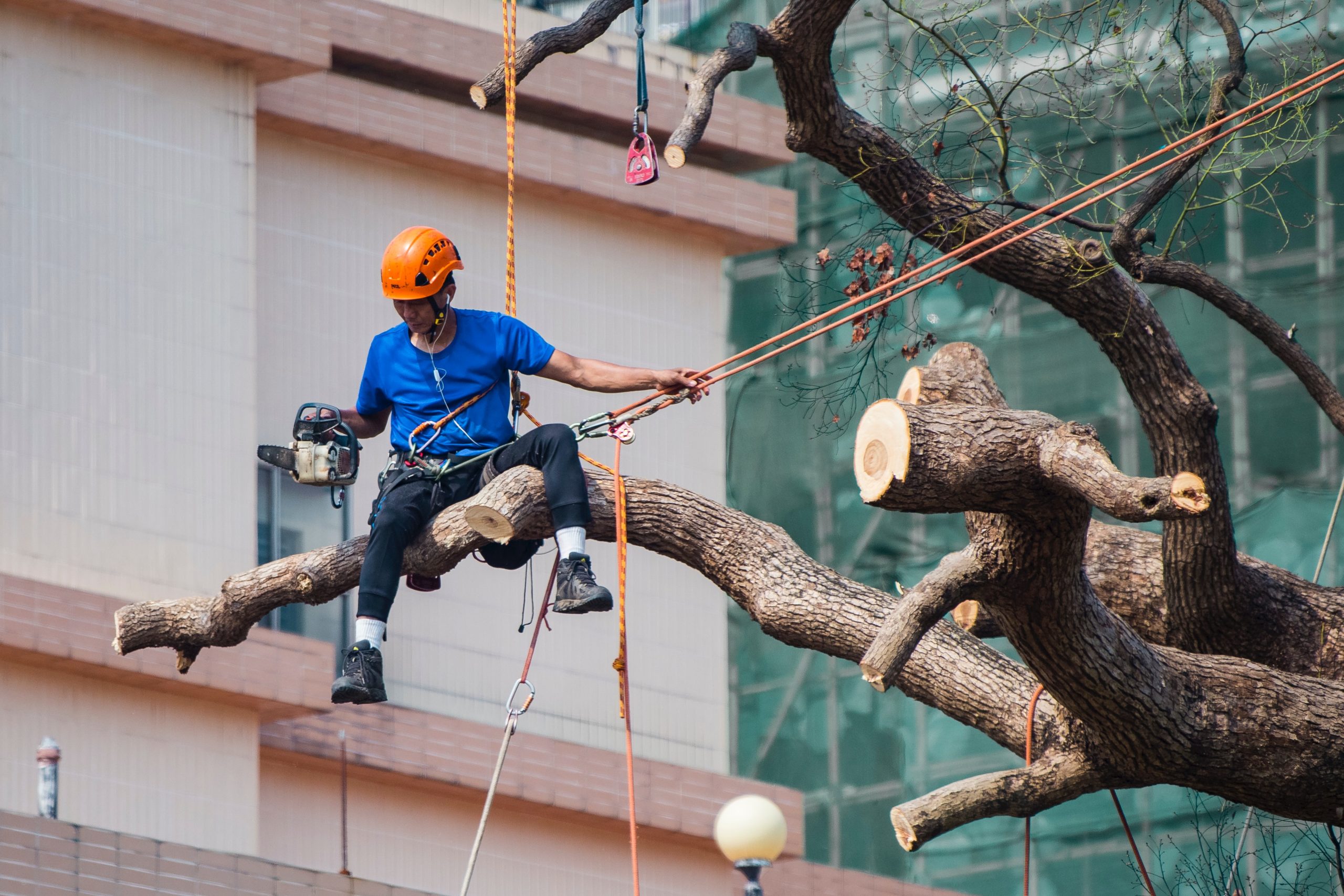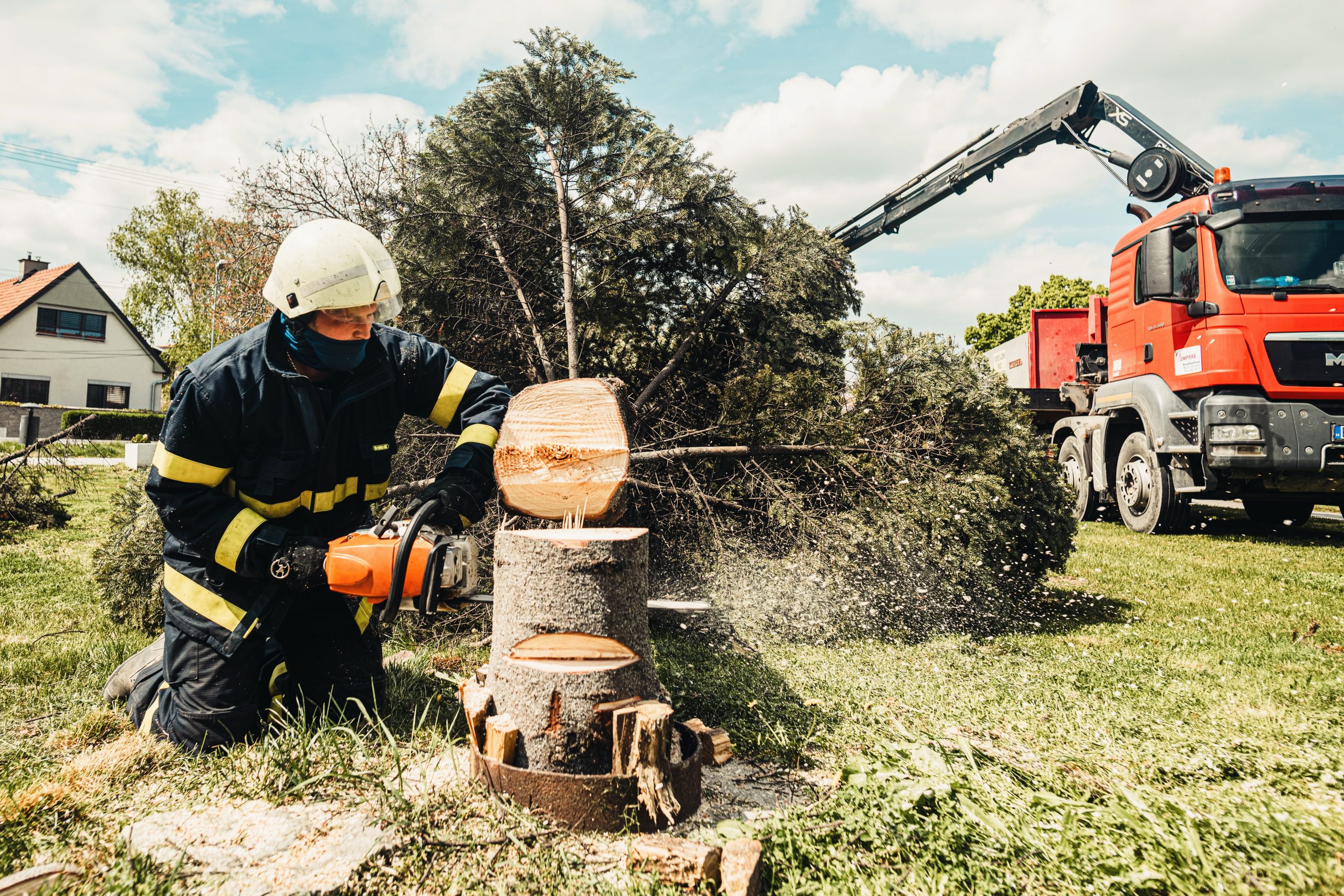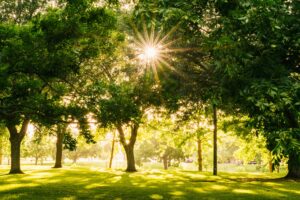THE IMPORTANCE OF CONSULTING AN ARBORIST BEFORE TREE REMOVAL
THE IMPORTANCE OF CONSULTING AN ARBORIST BEFORE TREE REMOVAL
Tree removal decisions hold significant importance due to the profound impact they can have on the environment, safety, property value, aesthetics, and overall well-being of both individuals and communities. Understanding the significance of tree removal decisions is crucial for making informed choices that balance various factors and considerations. Here’s why these decisions matter:

- Environmental Impact: Trees play a vital role in the ecosystem by providing oxygen, sequestering carbon dioxide, supporting biodiversity, and improving air and water quality. Removing trees without proper consideration can disrupt these ecological functions and harm local wildlife habitats.
- Safety and Risk Mitigation: Unhealthy, unstable, or damaged trees can pose serious safety risks. Falling branches or toppling trees can lead to property damage, injuries, or even fatalities. Removing hazardous trees minimizes these risks and ensures the safety of people and property.
- Property Value and Aesthetics: Trees enhance property value and curb appeal. Removing trees haphazardly can diminish a property’s visual appeal and potentially lower its value. Thoughtful removal decisions preserve the aesthetic appeal and landscape quality.
- Ecosystem Services: Trees provide invaluable ecosystem services, such as shade, cooling, erosion control, and stormwater management. Removing trees can disrupt these services and lead to adverse effects on local climates, soil stability, and water runoff.
- Impact on Biodiversity: Trees support a diverse range of plant and animal species. Removing trees can disrupt the delicate balance of local ecosystems, leading to a decline in biodiversity and potential cascading effects on the food chain.
- Local Climate and Microclimate: Trees play a role in moderating local temperatures and creating microclimates. Removing trees can contribute to urban heat island effects and disrupt the natural cooling and shading they provide.
- Cultural and Historical Value: Some trees have cultural, historical, or heritage significance. Their removal can result in the loss of important landmarks or symbols with deep community connections.
- Alternatives and Preservation: Arborists can recommend alternatives to removal, such as pruning, cabling, or pest management, which can extend a tree’s life and preserve its benefits.
- Social Well-being: Trees contribute to the overall well-being of communities by offering spaces for relaxation, recreation, and social interaction. Removing trees can negatively impact the quality of life in neighborhoods.
- Future Generations: The decisions made today about tree removal can affect future generations. Removing mature trees that took decades to grow could deprive future communities of the benefits these trees offer.
- Responsiveness to Change: Climate change and urban development impact tree health and viability. Making thoughtful decisions about tree removal is essential for adapting to changing environmental conditions.
Role of Arborists in Tree Care and Removal
Arborists play a crucial role in tree care and removal, offering their expertise to ensure the health, safety, and responsible management of trees. Their specialized knowledge and skills contribute to the well-being of trees, the environment, and the people who interact with them. Here’s an overview of the role of arborists in tree care and removal:

- Tree Health Assessment: Arborists are trained to assess the health of trees through careful observation and diagnostic techniques. They can identify signs of diseases, pests, nutrient deficiencies, and structural issues that may affect the tree’s well-being.
- Disease and Pest Management: Arborists are knowledgeable about various tree diseases and pests. They can recommend and implement appropriate treatments to address these issues and restore the health of trees.
- Pruning and Trimming: Arborists are skilled in proper pruning techniques, which enhance tree structure, promote healthy growth, and improve aesthetics. They understand the biology of trees and know when and how to prune without causing harm.
- Tree Removal Guidance: When tree removal is necessary, arborists can provide guidance on the appropriate removal technique, taking into account factors such as tree condition, size, location, and safety considerations.
- Preserving Valuable Trees: Arborists can suggest alternatives to removal, such as bracing, cabling, or pest management, to extend the life of valuable trees and preserve their benefits.
- Planting and Species Selection: Arborists can recommend suitable tree species for specific environments and guide property owners in proper planting techniques to ensure successful establishment.
- Site-Specific Considerations: Arborists assess the site conditions, soil quality, drainage, and available space to make informed decisions about tree care and planting.
- Structural Stability Assessment: Arborists can determine the structural integrity of trees, identifying potential hazards like weak branches or root issues that might lead to falling or instability.
- Safety Planning: Arborists are trained to plan and execute tree care and removal operations safely. They consider factors such as proper equipment usage, escape routes, and the protection of nearby structures.
- Environmental Stewardship: Arborists promote responsible tree management that considers the ecological value of trees. They can recommend strategies to minimize environmental impact during tree care and removal.
- Legal and Regulatory Compliance: Arborists are familiar with local regulations and permit requirements related to tree care and removal. They ensure that tree care activities are conducted in accordance with the law.
- Continuous Education: Arborists stay updated on the latest research, techniques, and industry standards through continuous education. This ensures that they provide the most current and effective tree care advice.
- Consulting and Expert Advice: Property owners, developers, and municipalities often consult arborists for expert advice on tree-related matters, ensuring informed decisions that balance aesthetics, safety, and environmental considerations.
In summary, arborists bring specialized knowledge and skills to the field of tree care and removal. Their expertise supports the health, safety, and responsible management of trees, benefiting both individuals and the environment. Consulting with arborists is a valuable step in making informed decisions that contribute to the well-being of trees and the surrounding ecosystem.
Expert assessment of tree health involves a thorough evaluation conducted by certified arborists or tree care professionals to determine the overall well-being of a tree. This assessment goes beyond casual observation and takes into account various factors that can impact the tree’s vitality, structural integrity, and long-term health. Here’s how expert assessment of tree health is conducted:
- Visual Inspection: Arborists begin by visually inspecting the tree, looking for visible signs of stress, disease, pests, decay, or structural issues. This includes observing the foliage, bark, branches, and overall canopy appearance.
- Symptom Identification: Arborists are trained to recognize specific symptoms that indicate potential health problems. These symptoms might include discoloration, wilting, dead branches, cankers, or fungal growth.
- Environmental Conditions: The arborist considers the environmental conditions in which the tree is growing. Factors like soil quality, drainage, light exposure, and nearby vegetation can impact the tree’s health.
- Soil Analysis: Soil plays a vital role in a tree’s health. Arborists may collect soil samples to analyze nutrient levels, pH, compaction, and drainage. This information helps determine if the tree is receiving the necessary nutrients.
- Pest and Disease Inspection: Arborists examine the tree for signs of insect infestations, diseases, or fungal infections. They can identify pests that might be harming the tree and recommend appropriate treatments.
- Structural Assessment: Arborists evaluate the tree’s structure to identify potential weaknesses or defects. They look for cracks, splits, cavities, and signs of decay that might compromise the tree’s stability.
- Root System Evaluation: The root system is crucial for a tree’s health and stability. Arborists assess the root zone for signs of root rot, girdling roots, or inadequate root development.
- Canopy Analysis: The canopy provides insights into the tree’s overall vigor. Arborists analyze factors like foliage density, leaf size, and growth patterns to assess the tree’s ability to produce energy.
- Stress Factors: Arborists consider external stress factors that might impact the tree, such as construction damage, poor pruning practices, or soil compaction.
- Diagnosis and Recommendations: Based on the assessment, arborists diagnose any existing problems and provide recommendations for treatment. This could include strategies like pruning, pest control, soil amendments, or structural support.
- Monitoring Plan: In cases where the tree’s health issue can be managed rather than immediately removed, arborists might create a monitoring plan to track the tree’s progress and adjust treatments as needed.
- Documentation: Arborists document their findings, diagnosis, and recommendations in a report. This documentation helps property owners, landscape managers, and other professionals understand the tree’s health status and the proposed course of action.
Expert assessment of tree health is essential for making informed decisions about tree care, preservation, or removal. It ensures that the appropriate actions are taken to maintain the health and safety of trees while considering their significance in the ecosystem and the landscape.
[geocentric_weather id=”45ff4ccd-3d3f-498e-b0b9-91aaaf766bc4″]
[geocentric_about id=”45ff4ccd-3d3f-498e-b0b9-91aaaf766bc4″]
[geocentric_neighborhoods id=”45ff4ccd-3d3f-498e-b0b9-91aaaf766bc4″]
[geocentric_thingstodo id=”45ff4ccd-3d3f-498e-b0b9-91aaaf766bc4″]
[geocentric_busstops id=”45ff4ccd-3d3f-498e-b0b9-91aaaf766bc4″]
[geocentric_mapembed id=”45ff4ccd-3d3f-498e-b0b9-91aaaf766bc4″]
[geocentric_drivingdirections id=”45ff4ccd-3d3f-498e-b0b9-91aaaf766bc4″]
[geocentric_reviews id=”45ff4ccd-3d3f-498e-b0b9-91aaaf766bc4″]
